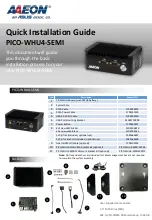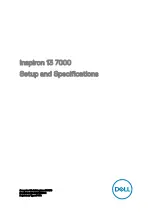
EM586-87
8-Bit Bus – Data is transmitted to expansion slots and other components on the bus only
along 8 parallel data line.
10Base-T – It is a 10Mbps IEEE 802.3/Ethernet standard that uses unshielded twisted
pair cable specification. 10Base-T supports network configuration using the CSMA/CD
access method over a twisted pair transmission system up to 100 meters in length
without the use of repeater.
16-Bit Bus or ISA Bus – Data is transmitted along either 8 or 16 data lines, depending
on what kind of adapter card is used in an expansion slot. ISA is the abbreviation of
Industry Standard Architecture.
100Base-TX – It is a 100Mbps IEEE 802.3/Ethernet standard that uses UTP cable.
Also called Fast Ethernet, it uses RJ-45 connectors and EIA/TIA T568B pinning.
Maximum cable length from hub to node is 100 meters without a repeater.
Adapter – It is also called an expansion board, expansion card, or adapter card. It is a
small circuit board that is installed in the expansion slots on the motherboard. You can
install a particular adapter that connects a new device such as internal modem, sound
card, and scanner.
AGP (Accelerated Graphic Port) – is a 32-bit, 66MHz external frequency data bus that
transmit a maximum of 528MB/s of data (4 times the speed of PCI transmission); this
design improves the speed of large amount in video transaction.
BIOS (Basic Input /Output System) – This is a chip on the motherboard that contains
the instructions for starting up, or booting, the computer, and more.
Bus – Data that travels in a computer along the circuits on the motherboard are called
buses. Although three main buses (data bus, address bus, and control bus) manage
the computer’ s operation, often these are collectively called the bus. The bus carries
instructions back and forth between the CPU and other devices in the system. ISA,
EISA, VL-Bus, PCI and SCSI are examples of PC buses.
GLOSSARY




























